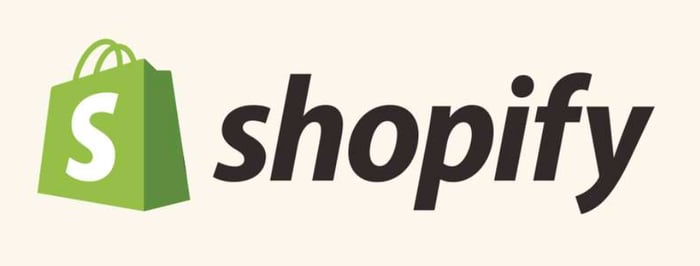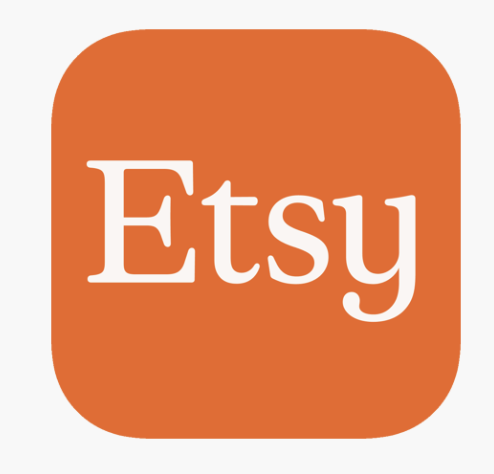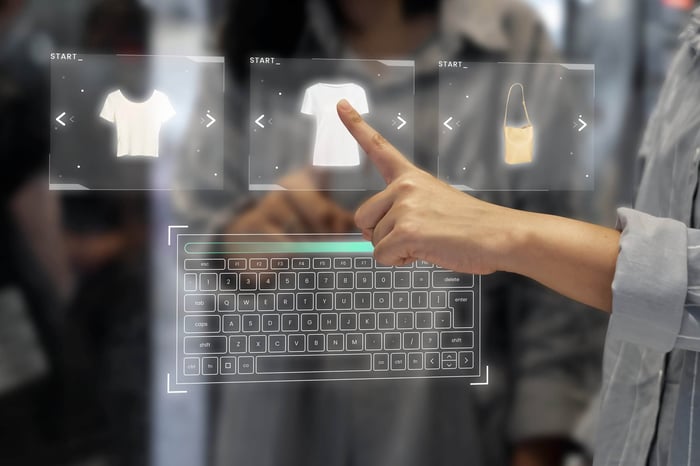Shopify vs Etsy: A Complete Comparison for Sellers
Table of Contents
- Shopify vs Etsy: Key Differences at a Glance
- What is Shopify?
- What is Etsy?
- Pricing Comparison: Shopify vs Etsy
- Ease of Use
- Design and Customization
- Traffic and Audience
- Shopify vs Etsy for Fashion and Lifestyle Brands
- Pros and Cons of Shopify vs Etsy
- Which Is Better for You: Shopify or Etsy?
- How Modelia Helps Shopify Sellers Stand Out
- Conclusion
- FAQ: Shopify vs Etsy
Choosing the right platform for your online business can define how far your brand goes. Two of the most popular names in the e-commerce world, Shopify and Etsy, offer very different ways to sell products online and both are trusted by thousands of sellers. Usually the choice between Shopify vs Etsy depends on your business goals, budget, and how much control you want over your brand.
In this complete comparison, we’ll break down everything you need to know about Shopify and Etsy for sellers, including pricing, features, pros and cons and which platform works best for your store.

Shopify vs Etsy: Key Differences at a Glance
Feature | Shopify | Etsy |
|---|---|---|
Platform Type | Independent e-commerce website builder | Online marketplace |
Setup Difficulty | Moderate | Easy |
Customization | High – full control over design and branding | Limited – preset templates |
Fees | Monthly subscription + transaction fees | Listing + transaction + payment fees |
Audience | You drive your own traffic | Built-in audience of 90M+ shoppers |
Best For | Brands building a long-term online presence | Artisans, small creators, or handmade sellers |
If you’re still not sure which one suits your business, let’s go deeper into what makes each platform stand out.
What is Shopify?
Shopify is an all-in-one e-commerce platform that empowers you to build your own branded online store from scratch. Think of it as your digital headquarters, a space where you control everything, from how your homepage looks to how customers complete their checkout. You can customize every detail, including colors, fonts and layout, to reflect your brand’s personality and create a shopping experience that feels truly yours.
One of the biggest advantages of Shopify is its flexibility. You can sell almost anything, physical products, digital downloads or even services. The platform connects seamlessly with thousands of apps, covering everything from payments and shipping to inventory management and AI tools that enhance your marketing and visuals.
However, with all that freedom comes a bit more responsibility. Shopify doesn’t bring you traffic automatically, you have to attract your own visitors through SEO, social media and paid ads. The upside is that all your traffic, data, and branding belong entirely to you. You’re not just another seller in a marketplace, you’re building a brand with long-term potential.
What is Etsy?
Etsy, on the other hand, is a marketplace. Instead of building a website from scratch, you join an existing platform where millions of people come specifically to shop for handmade, vintage or creative products.
It’s fast to set up, you just list your products, write descriptions and upload photos. However, Etsy limits your branding and customization options. Your store will always look and feel like part of Etsy’s ecosystem.
This makes Etsy a great choice for independent makers and small sellers who want visibility without heavy marketing work.

Pricing Comparison: Shopify vs Etsy
When comparing Shopify vs Etsy pricing, the main difference is how you pay.
Shopify Pricing:
Basic plan – $39/month
Shopify plan – $105/month
Advanced plan – $399/month
Transaction fees – 2.9% + 30¢ (if not using Shopify Payments)
Etsy Pricing:
$0.20 per listing (renewed every 4 months)
6.5% transaction fee
3% + 25¢ payment processing fee
Optional “Etsy Plus” plan: $10/month
If you’re selling just a few products, Etsy’s pricing can be more affordable. But as your store grows, Shopify often becomes more cost-effective since it doesn’t charge per listing and gives you more control over marketing and sales.

Ease of Use
Etsy wins in simplicity. You can open an account and start selling in minutes. The interface is beginner-friendly, and Etsy handles payments, hosting, and traffic.
Shopify, while intuitive, has a steeper learning curve because it offers more customization and tools. You’ll need to set up your website theme, connect a domain, and choose apps for shipping, analytics, and marketing.
However, Shopify’s dashboard is powerful once you get used to it, and tools like Modelia’s AI integrations simplify product image creation, video generation, and model visualization, saving you time on content creation.
Design and Customization
Here’s where Shopify truly shines. It allows complete freedom to design your store through customizable themes and templates. You can build a store that reflects your brand’s identity, colors, and tone.
Etsy, by contrast, restricts your store layout to its standard marketplace format. While you can upload your logo and header, most Etsy shops look similar. That’s intentional, it helps maintain Etsy’s consistent user experience, but it limits your branding opportunities.
If your goal is to build a distinct brand with a custom aesthetic and long-term growth, Shopify is the better option.

Traffic and Audience
Etsy brings you built-in exposure. Millions of visitors browse the platform daily, which means instant visibility for new sellers. However, that comes at a cost, intense competition. Your products appear next to similar listings, and you’ll need strong SEO and great visuals to stand out.
Shopify, by contrast, gives you no built-in traffic. You’re responsible for attracting your own visitors through ads, content marketing, and social media. The upside? You keep all your traffic, customer data, and brand recognition.
If you’re ready to invest in marketing and want independence, Shopify is the smarter choice. If you want plug-and-play exposure without extra marketing work, Etsy is easier to start with.
Shopify vs Etsy for Fashion and Lifestyle Brands
For fashion brands, designers, and lifestyle sellers, the difference between Shopify vs Etsy is even more evident.
Etsy works great for handmade accessories or vintage pieces, but Shopify offers scalability for modern DTC fashion brands. You can use AI tools like Modelia, available on the Shopify App Store, to automatically generate product visuals, outfit combinations, or try-on images—making your product pages more engaging and conversion-focused.
This kind of automation isn’t possible on Etsy, where customization and app integrations are limited.

Pros and Cons of Shopify vs Etsy
Platform | Pros | Cons |
|---|---|---|
Shopify | Full control over design and brand, scalable, powerful marketing tools, access to apps like Modelia | Requires your own traffic, monthly fee |
Etsy | Easy setup, instant audience, no website needed | Limited customization, strong competition, multiple fees |
Which Is Better for You: Shopify or Etsy?
Choose Etsy if you’re an artist, crafter, or vintage seller who wants quick visibility and minimal setup.
Choose Shopify if you want to build a long-term brand, scale your business, and control your customer experience.
Many successful brands start on Etsy, build a customer base, then move to Shopify once they’re ready to grow independently.
How Modelia Helps Shopify Sellers Stand Out
If you’re a fashion or apparel brand using Shopify, tools like Modelia can dramatically improve your visual marketing. Modelia’s AI allows you to create high-quality product images and videos with virtual models, helping you save on photoshoots and launch campaigns faster.
By integrating Modelia with Shopify, you can automate your product visuals, test different looks, and ensure your listings stay fresh and on-trend, an advantage Etsy doesn’t offer.

Conclusion
When comparing Shopify vs Etsy, it’s not about which is “better” overall, it’s about which fits your business model. Etsy gives you simplicity and a built-in audience, while Shopify gives you freedom, scalability, and advanced tools for growth.
If you’re serious about building a brand, Shopify paired with Modelia’s AI-powered content creation can help you scale faster, reduce costs, and stand out in a competitive e-commerce landscape.
FAQ: Shopify vs Etsy
1. Is Shopify better than Etsy for beginners?
Etsy is easier for beginners since it requires no setup. Shopify is better for those ready to build a full brand.
2. Can I sell on both Shopify and Etsy?
Yes. Many sellers use Etsy to find customers and Shopify as their main store for repeat sales.
3. Which platform has lower fees?
Etsy can be cheaper for small shops, but Shopify becomes more affordable as you scale.
4. Can I move from Etsy to Shopify later?
Absolutely. You can export listings from Etsy and import them into Shopify easily.
5. How can Modelia help my Shopify store?
Modelia helps Shopify sellers create AI-generated product images and videos, enhancing engagement and conversion rates.
How would you rate this article:
Related Articles
- What is Google's Virtual Try-On feature?
- How an AI Personal Stylist Can Upgrade Your Wardrobe
- Change Clothes in Photos Instantly with AI
- The Top Modelia Tools Transforming Digital Fashion Creation
- Hautech AI Pricing, Plans and Feature Breakdown
- Old School Fashion Trends That Are Back in Style
- 10 Best AI Video Editing Tools for Streamlined Editing and Creation
- How to Create a Clothing Brand: Step-by-Step Guide
- Influencer Marketing for Small Business: Step by Step Guide
- Christmas Pajamas for the Whole Family
